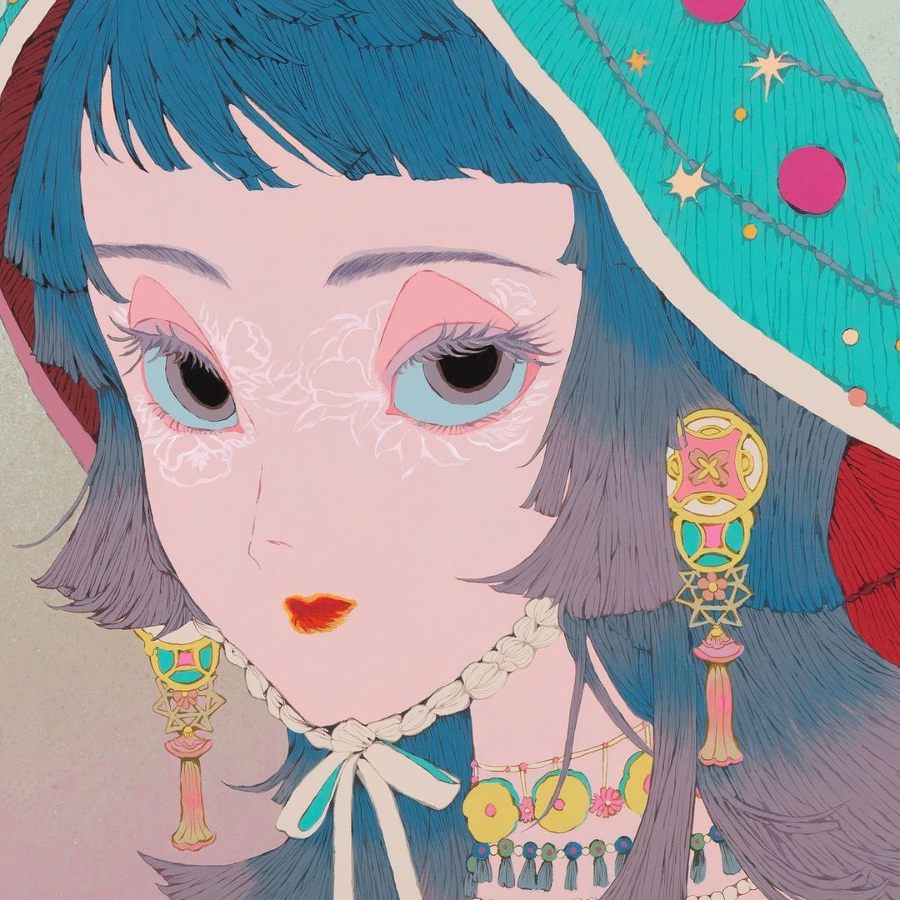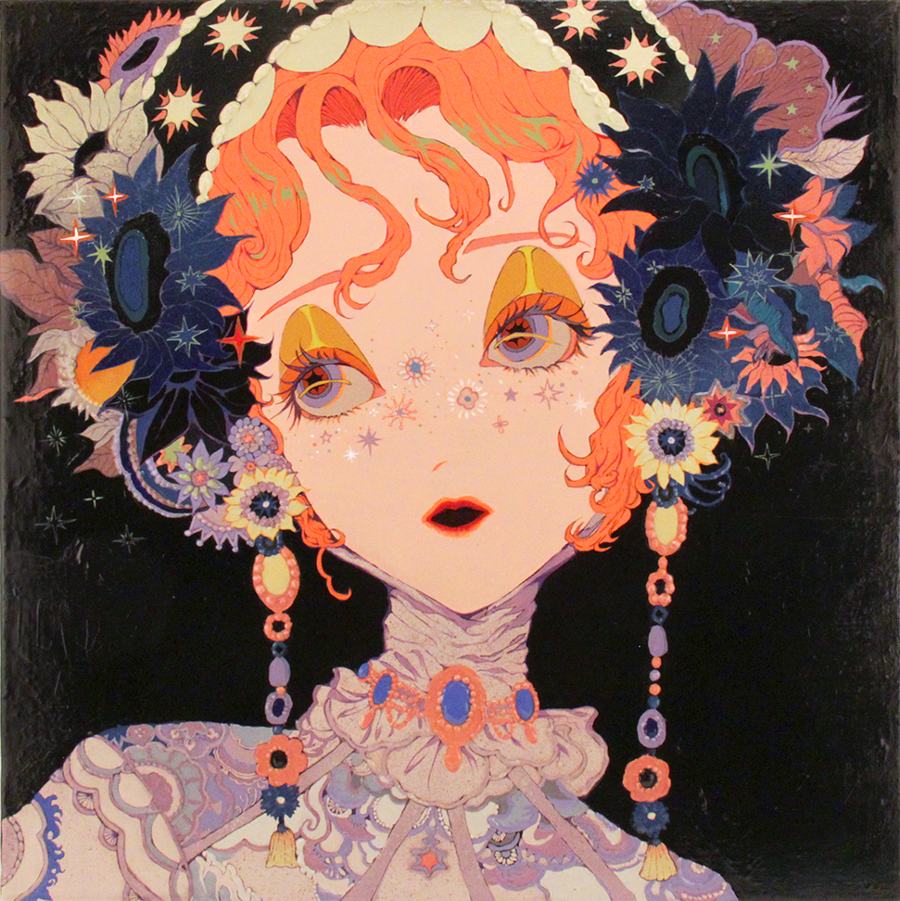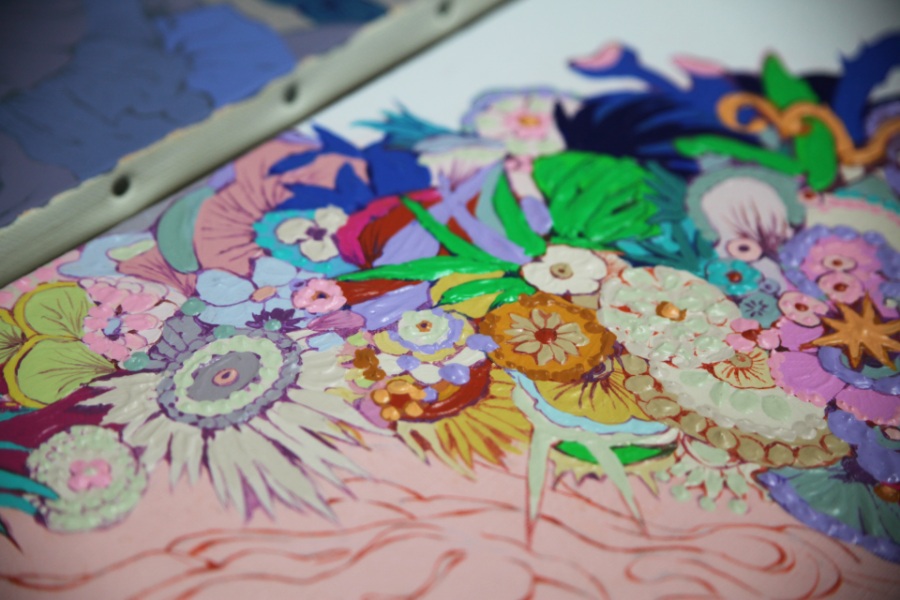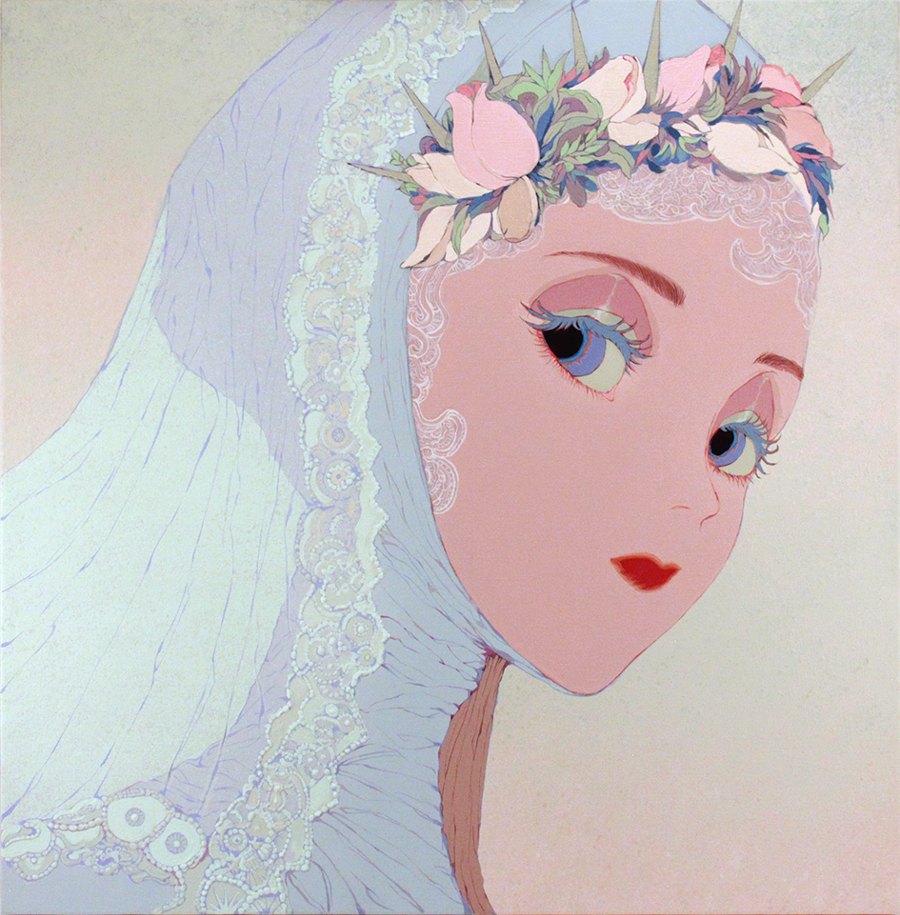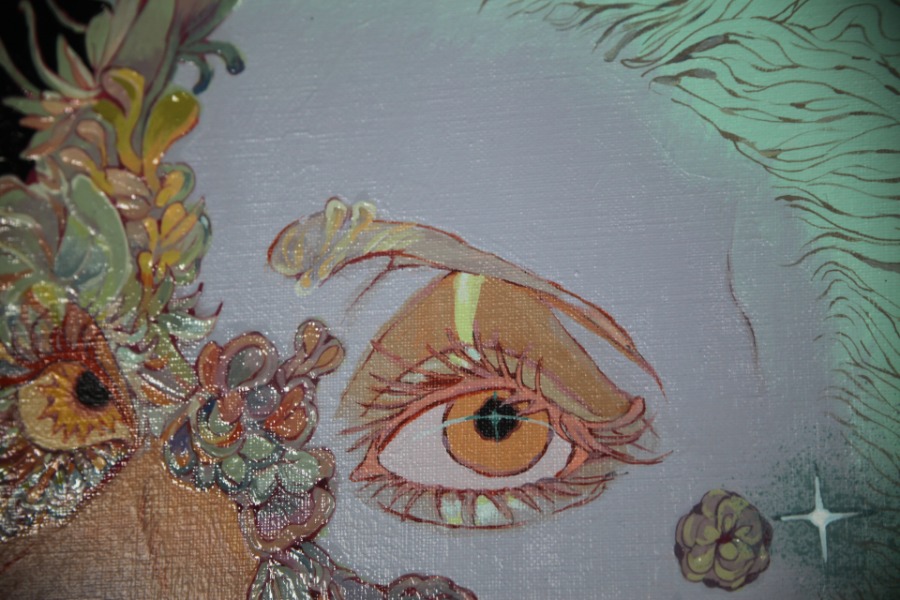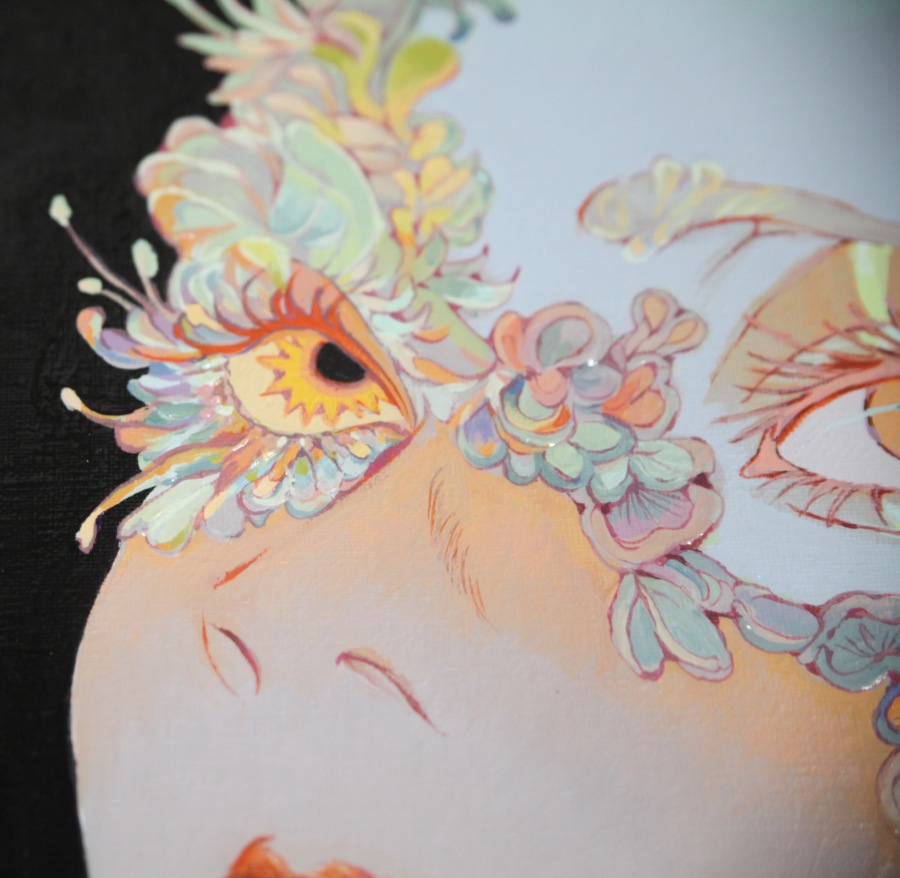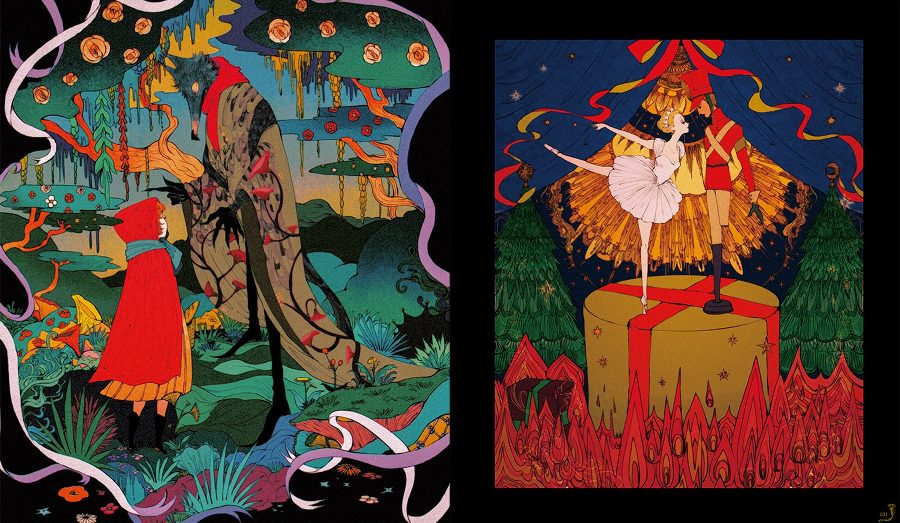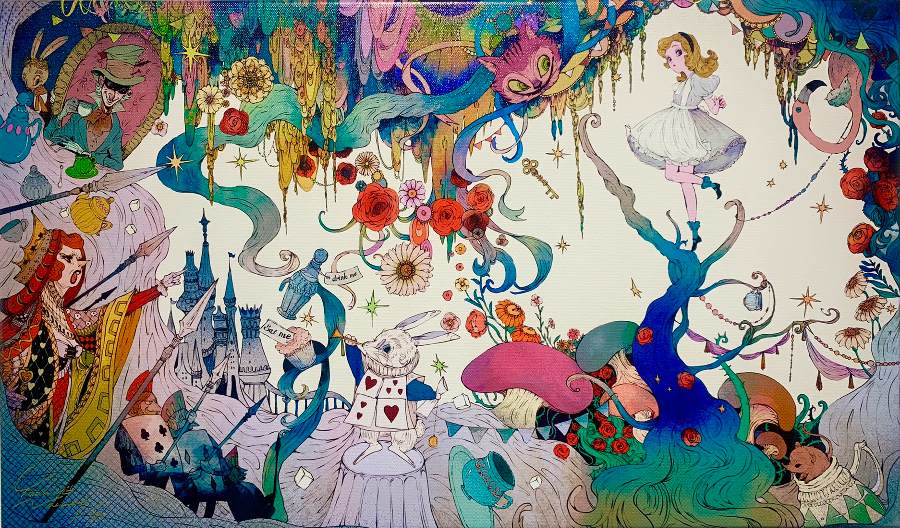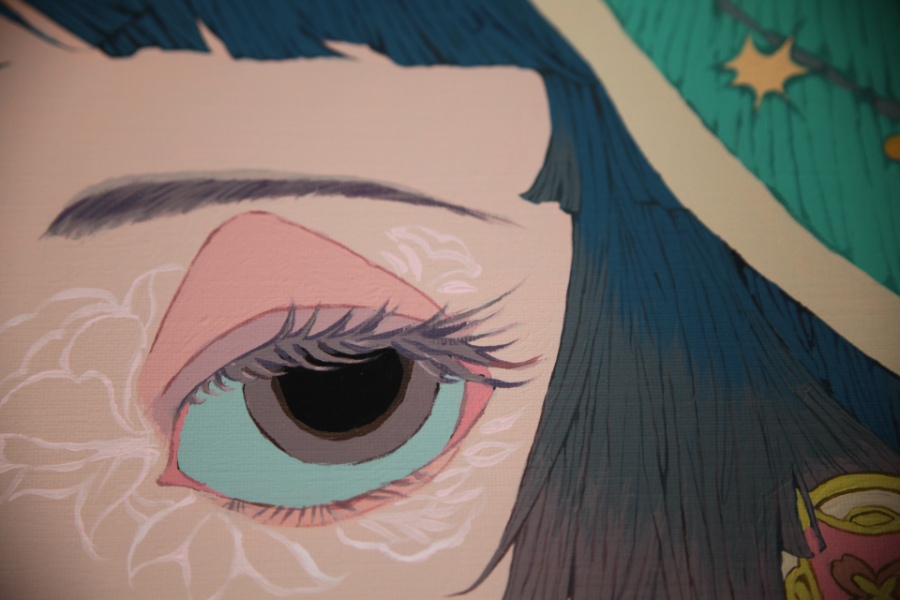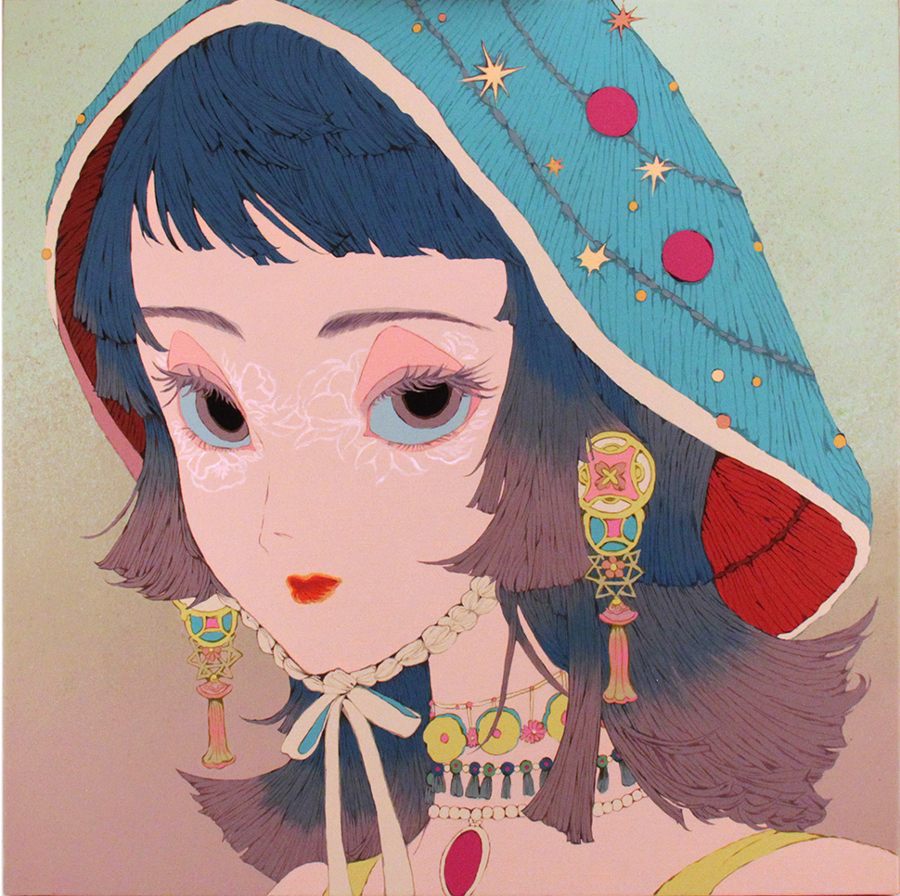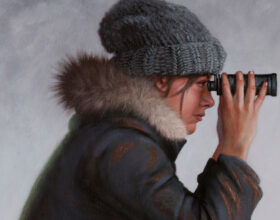So many silly artist tropes persist despite how little they reflect the truth. The notion that – in order to produce authentic, high caliber work – one must suffer for their art is just as eyeball rolling as the widely held belief that artists are generally eccentric, melodramatic, disorganized, or always on the verge of being financially destitute. Where are all the stories about the many creatives whose auras simply shine brighter the moment that they answer the call of the muse, and – once their reason for being awakens all the cells within their body – they hit the ground running, never looking back? If you’re craving a positive artist success story for a change, then you’re going to really appreciate what Nanaco Yashiro has achieved thus far.
Despite having just a quarter of a century of life experience, Nanaco Yashiro’s stereotype shattering achievements suggest that – regardless of one’s age – discipline and talent always end up prevailing. Last year, the Tokyo-born illustrator/painter achieved two notable firsts by publishing a glorious fairytale-themed art book entitled Wonderland and securing her debut solo show in Japan. She’s now in the midst of her first American feature exhibition at Gallery Nucleus in Alhambra, California, which showcases twenty new abstract fantasy paintings.
I grew up watching Studio Ghibli and Disney animation, so I think that’s what I find comforting. As an adult, I’ve carried the fairytales from my childhood with me.
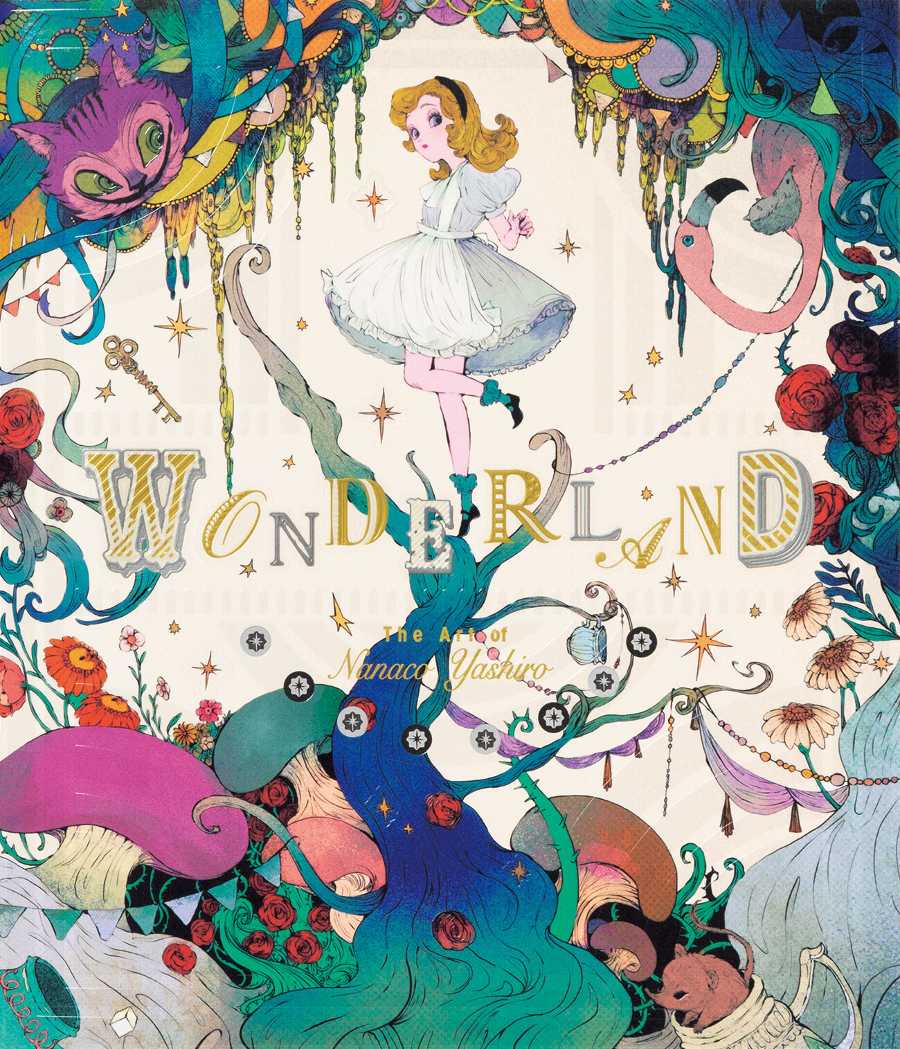
The Joshibi University of Art and Design graduate has been making big waves with her fairytale-esque narratives filled with such a dynamic hypersaturation of colour that – despite the attention deficit disorder that our society is afflicted with – we’re incapable of quickly dismissing such beguiling imagery. While the aesthetic panache that Nanaco Yashiro splashes across her canvases is clearly alluring, the beholder remains so transfixed because her imagery taps into our cherished childhood memories of comfort, beauty, wonder, and joy. Listening “to the story of each painting”, the artist invites us to take refuge and relief in the nostalgic dreamscapes that are only possible amid her unbridled kaleidoscopic imagination.
Even if a work is darker, I always aim to create something in which light always exists somewhere. The painting itself is always a symbol of hope for me.
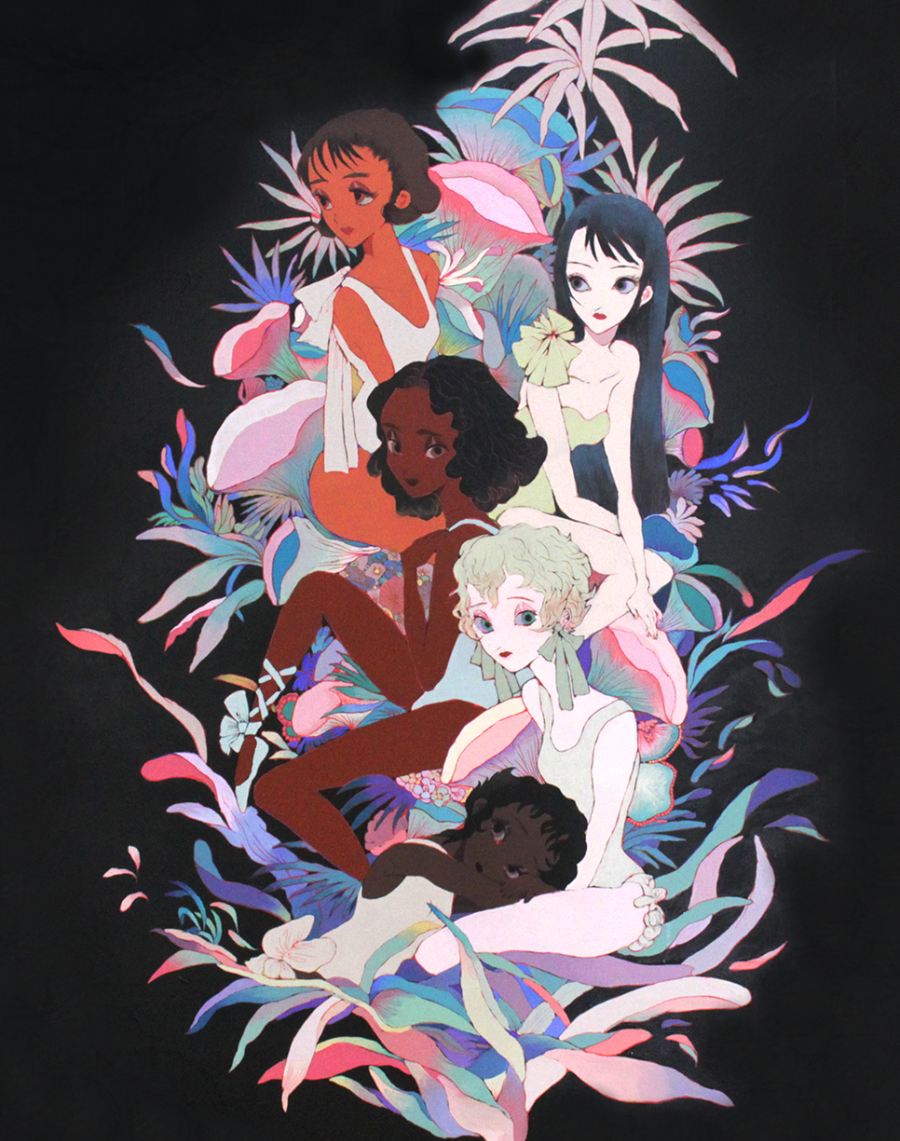
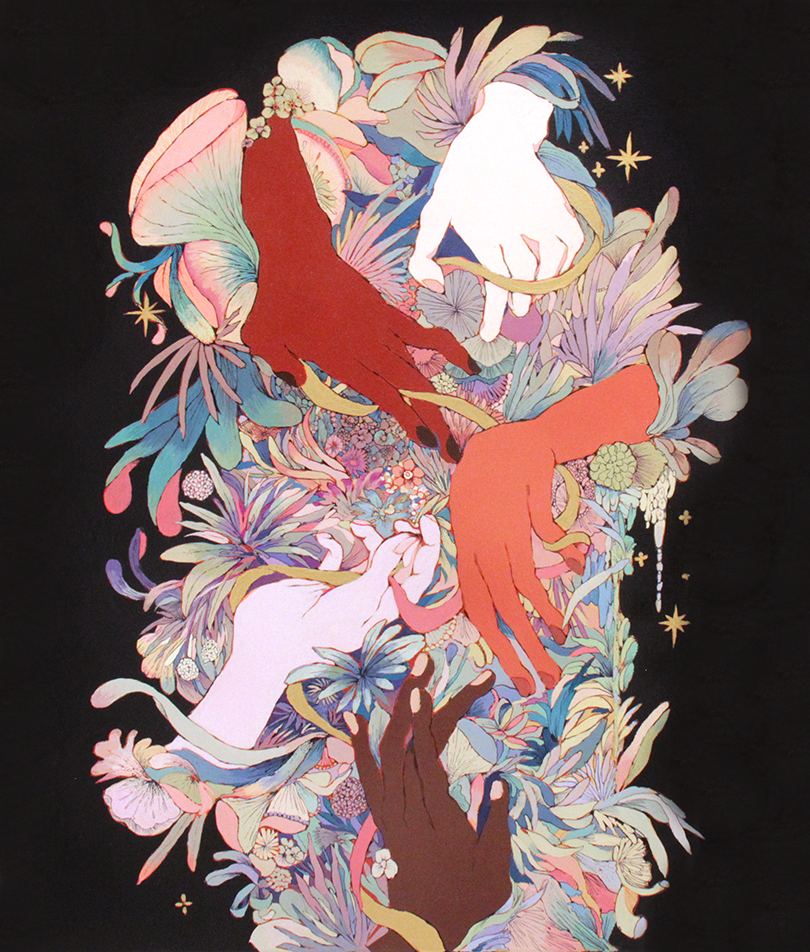
Exclusive Interview With Nanaco Yashiro
« English Translation: Erica Williams »
Just four years ago while you were still in college studying oil painting, you began thinking of yourself as a working artist. Many creatives would gain confidence if – like you – they were already participating in exhibitions and receiving commissions. Still, it helps to have a strong support system in place. Has your family always encouraged your talent?
I don’t think I can imagine myself doing anything other than painting. Ever since childhood, I’ve enjoyed painting pictures and my parents really supported me in pursuing it. My father is a chef. He’s really good at working with his hands, which in some ways is similar to being an artist.
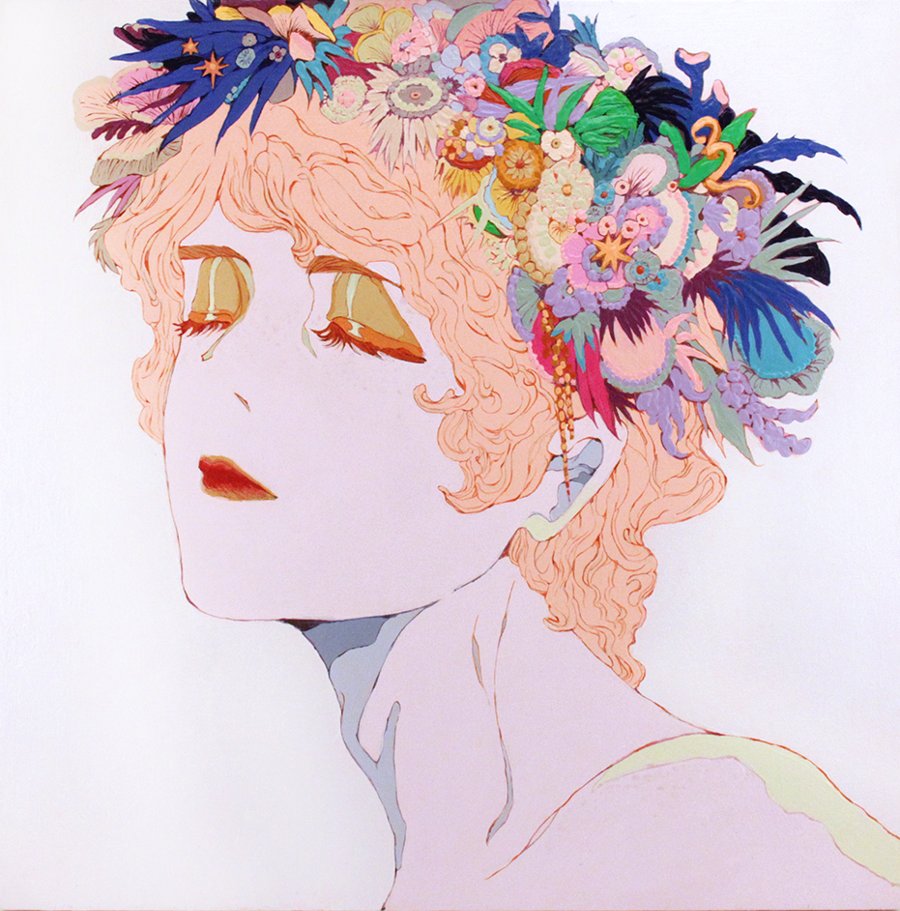
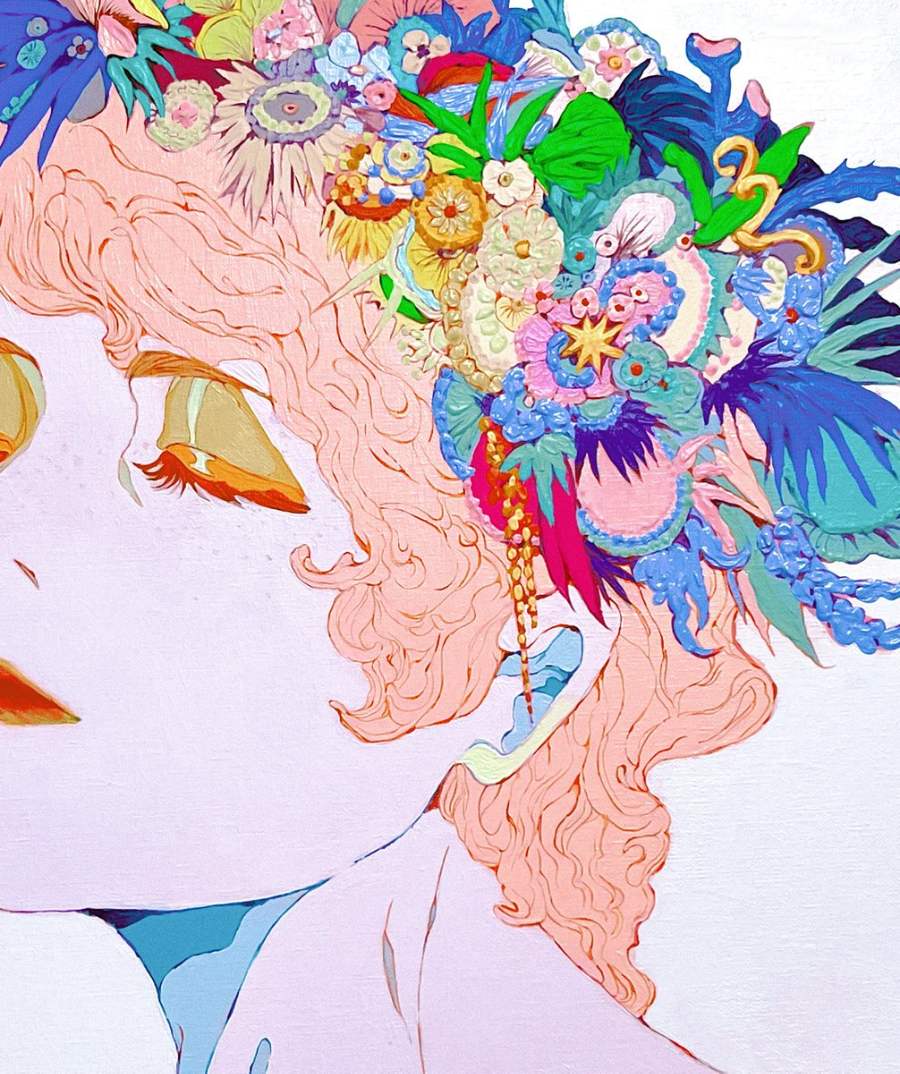
Has anyone outside of your family nurtured your artistic skill? Did that lead to the distinctive artistic voice that characterizes your work today?
I think my aesthetic was probably triggered around my third year of university by the collection I presented as part of my coursework. The professor who looked at my assignments praised and pushed me to paint more of the things that I liked to create, which I think led to my current style of work.
I realize that princes rescue princesses in fairytales, but I view both the princess and the prince – not by gender – but as individual people.
The commonly used ‘anime fantasy’ label that is ascribed to your art doesn’t seem quite accurate. Is there a term that you feel is more fitting?
I think my art is like fantasy, but since there are so many abstract worlds within my work, it’s difficult to classify. My goal is to create art that combines nostalgia and dreamscapes. I hope that somewhere within my various worlds, beautiful stories rise to the surface.
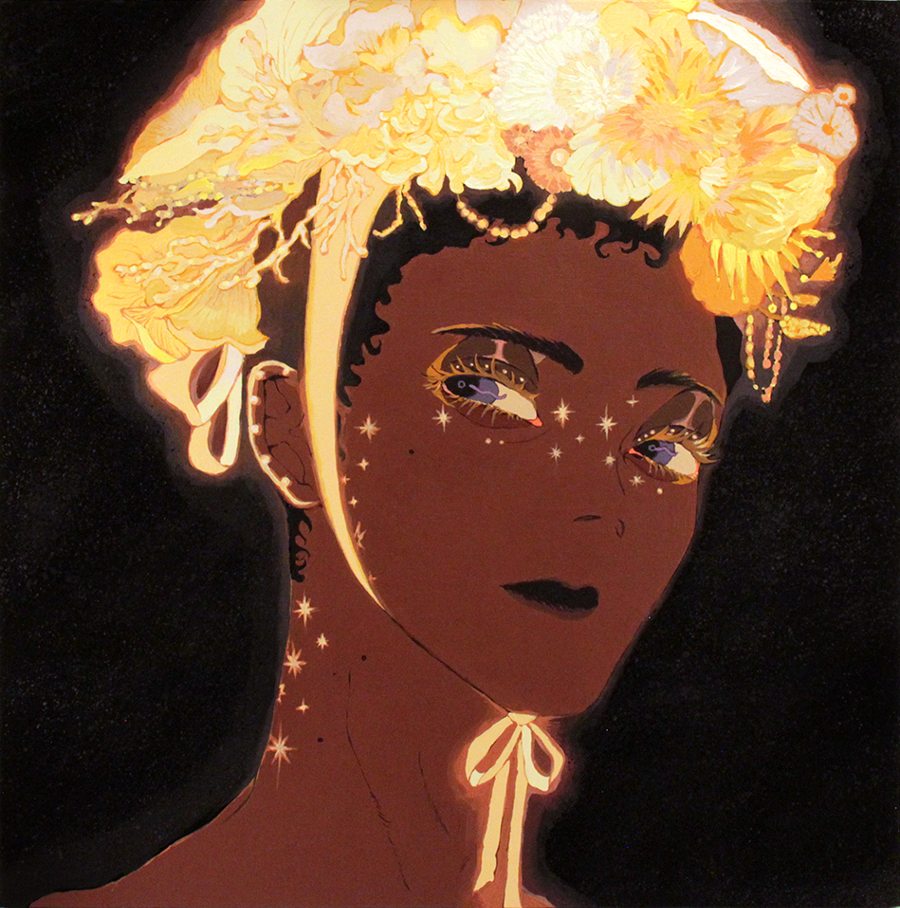

Despite the fairytale aspect of your aesthetic, you’re not peddling the idea of a prince swooping in to rescue the fair maiden. Is that a pro-feminism, 21st century storytelling decision?
I’m interested in painting various stories. I realize that princes rescue princesses in fairytales, but I view both the princess and the prince – not by gender – but as individual people. Because I am a woman, I think I tend to draw women with whom I find it easy to sympathize.
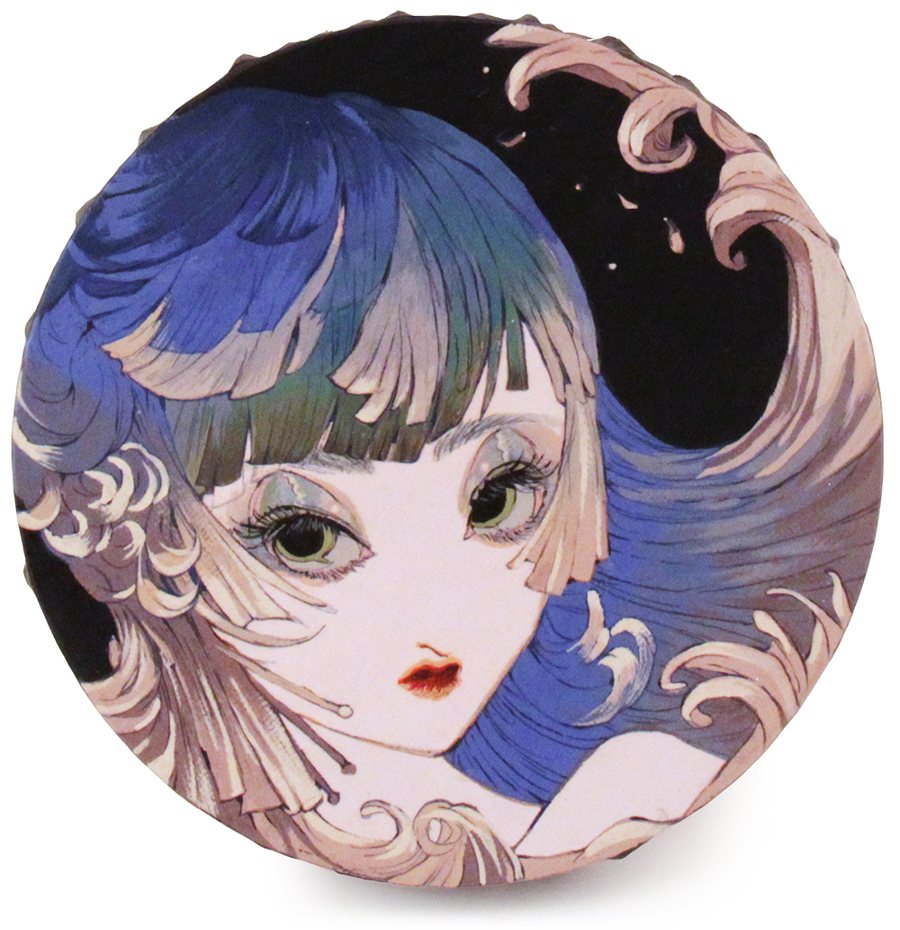
Acrylic and Gel Medium on Canvas
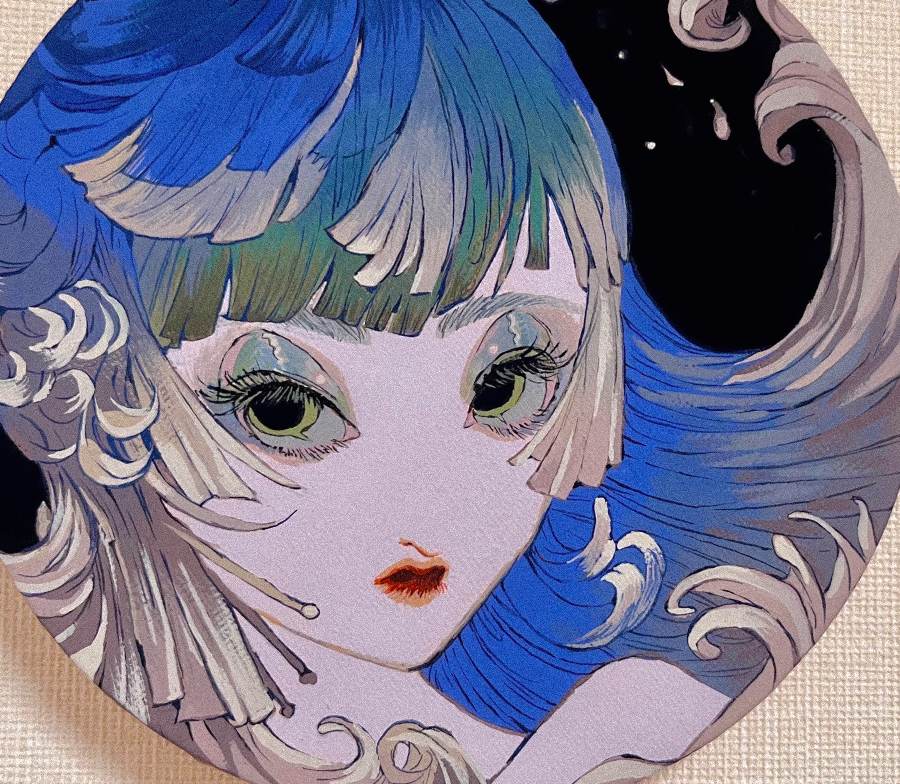
What artistic mediums dominate your portfolio at the moment?
I work mainly in acrylic gouache and digital art media. I want to work more with the canvas and try out various things without being bound by its frame.
Gouache seems to be your ‘artistic spirit animal’. Why is it so essential to your kaleidoscopic palette?
Acrylic gouache is the essential medium for my art practice that best expresses my feelings and the things that I want to get across. Quick-drying acrylic gouache lets me add colours at my own speed, and the paint doesn’t bleed into other colours, so I can clearly create the colour expressions that I want.
Even in a beautiful world, though, there are trials, so my art depicts a bittersweet place where the viewer can still find relief.
How do you consistently come up with so many electrifying colour combinations?
I create colours by examining each one carefully, and when one colour is complete, I compare it with other colours around it. Creating colours this way is really time consuming, but if I cut corners while creating one colour, that can erode the balance of the surrounding colour scheme. That’s why I am always quite careful during this process.

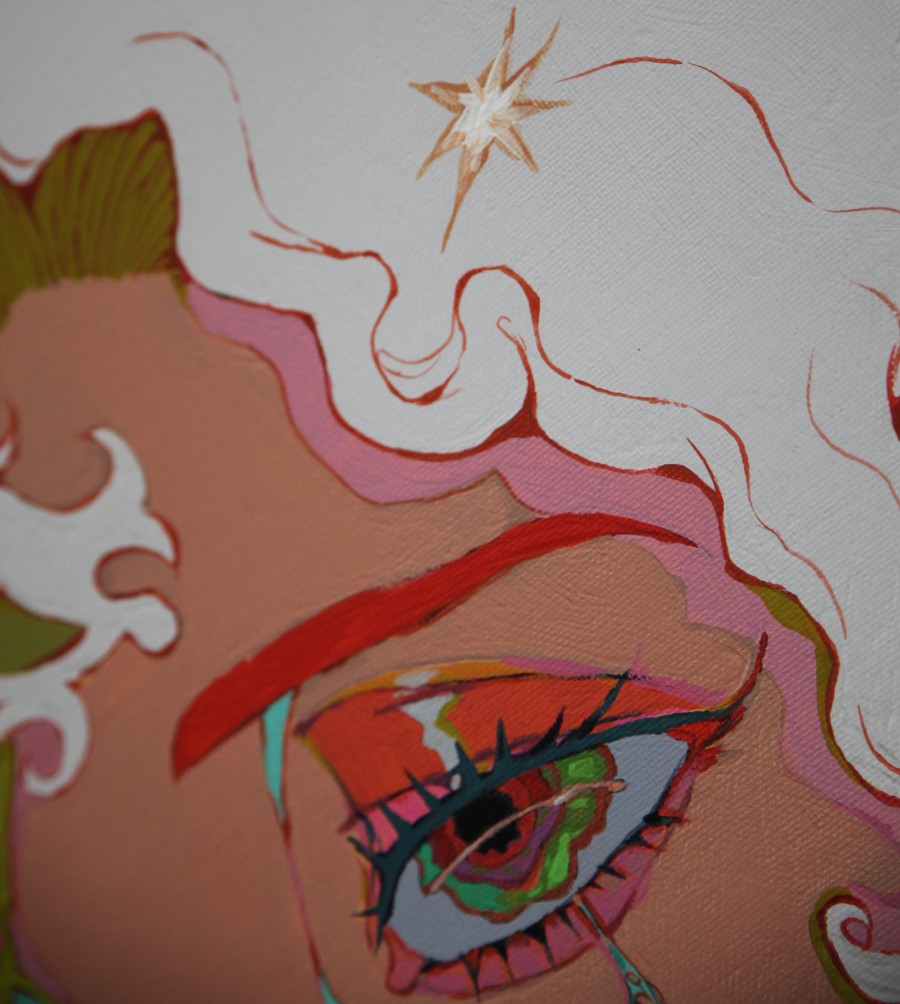
Do your super saturated palettes emerge mainly out of the needs of your artistic soul, or are you partially motivated to create such lively pieces because you’re trying to lift the beholder’s spirit?
While it’s not intentional, I am aware that colour enriches people’s hearts and minds, and I am certainly mindful about creating colours that I myself enjoy.
Is it true that all of your pieces begin in the digital realm before you take them onto the canvas/gouache realm? Why does melding technology with traditional art suit your artistic needs so well?
First, I create what I envision the work will be in digital format, and after that, I recreate the work in acrylic gouache on canvas. The flatness of digital design, which seems closer to old-fashioned classical animation, is definitely attractive to me. I like smooth lines that look like they’re about to start moving at any second. But I just really like the feel of paint – the texture and volume – which is why I focus mainly on bringing my concepts to life through paint on canvas.
I think my art is like fantasy, but since there are so many abstract worlds within my work, it’s difficult to classify.
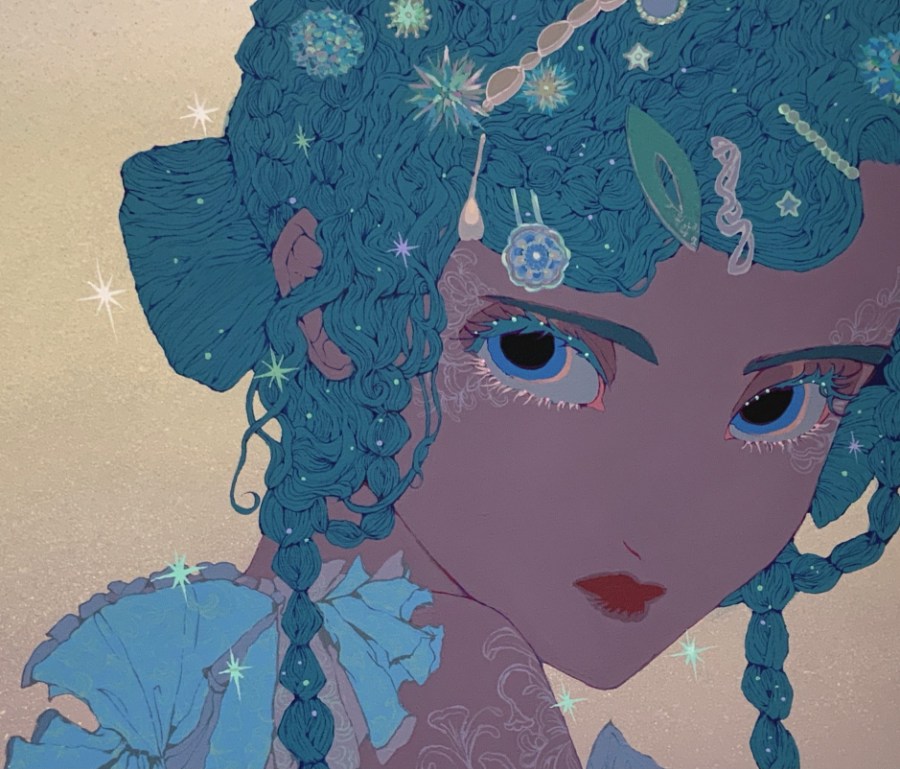
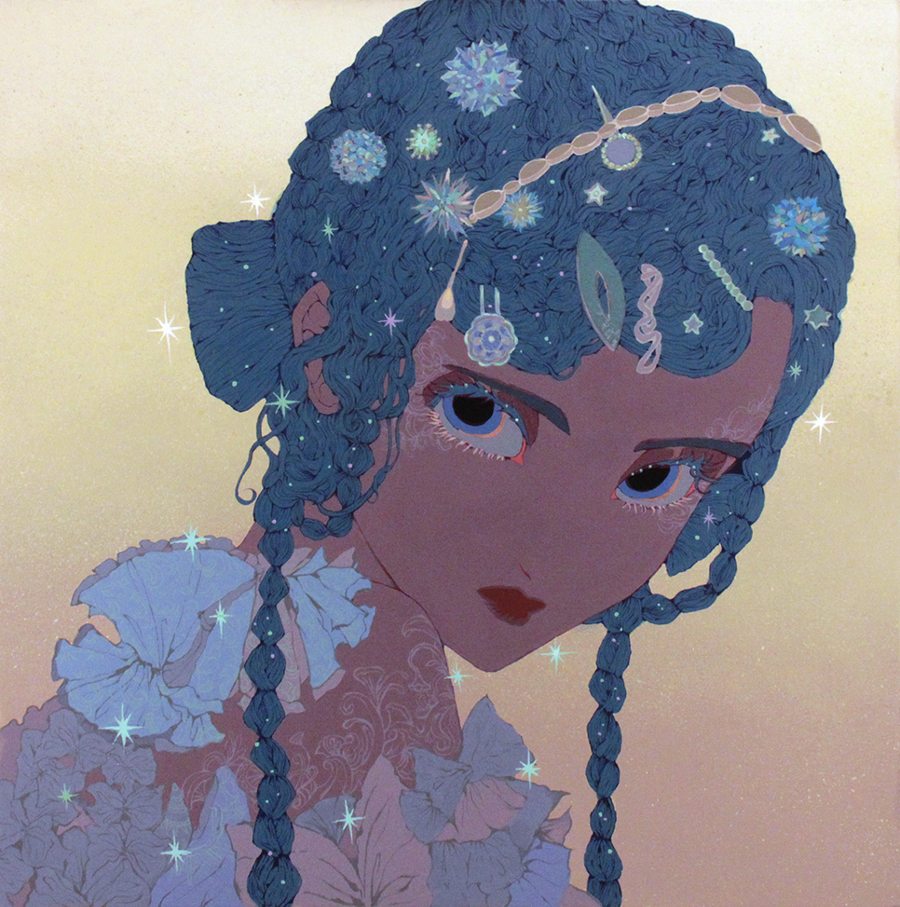
Acrylic and Gel Medium on Canvas
A very intriguing blend of contrasting moods emanate from your paintings. Are you suggesting to the beholder that none of your muses are living in a 100% fairytale land?
I grew up watching Studio Ghibli and Disney animation, so I think that’s what I find comforting. As an adult, I’ve carried the fairytales from my childhood with me. Even in a beautiful world, though, there are trials, so my art depicts a bittersweet place where the viewer can still find relief. I’m attracted to beauty and inspired by strength and facing challenges head on. I also really feel the power of natural elements and things with hidden power.
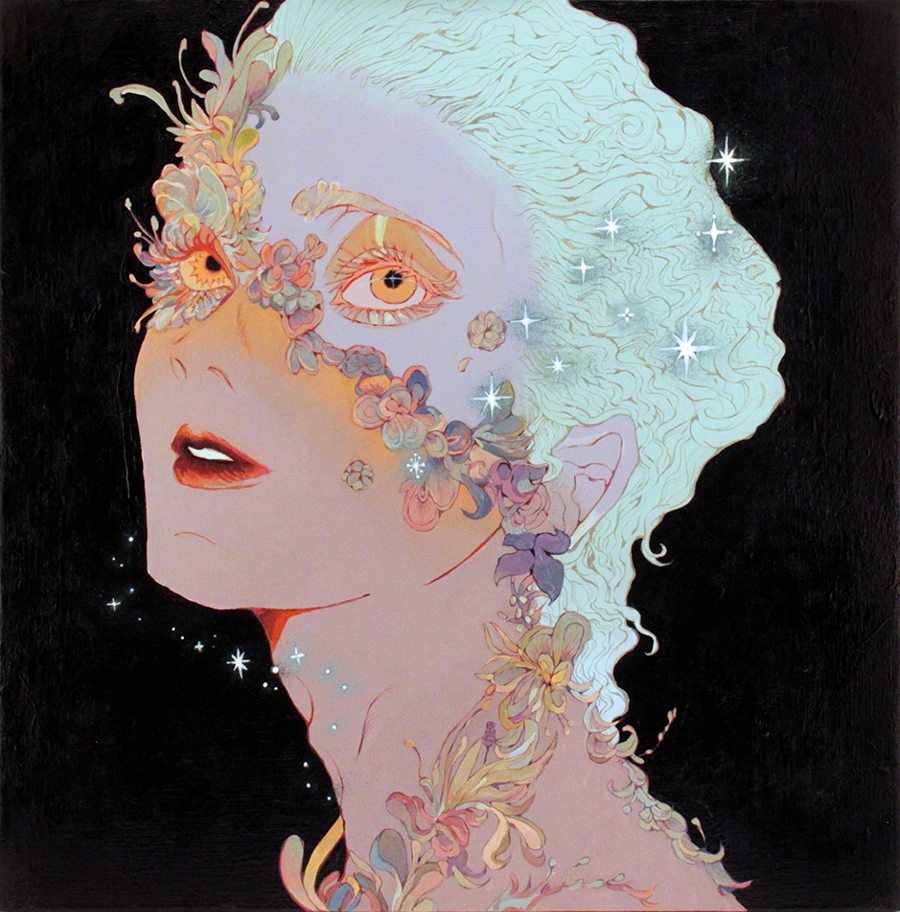
Acrylic and Gel Medium on Canvas
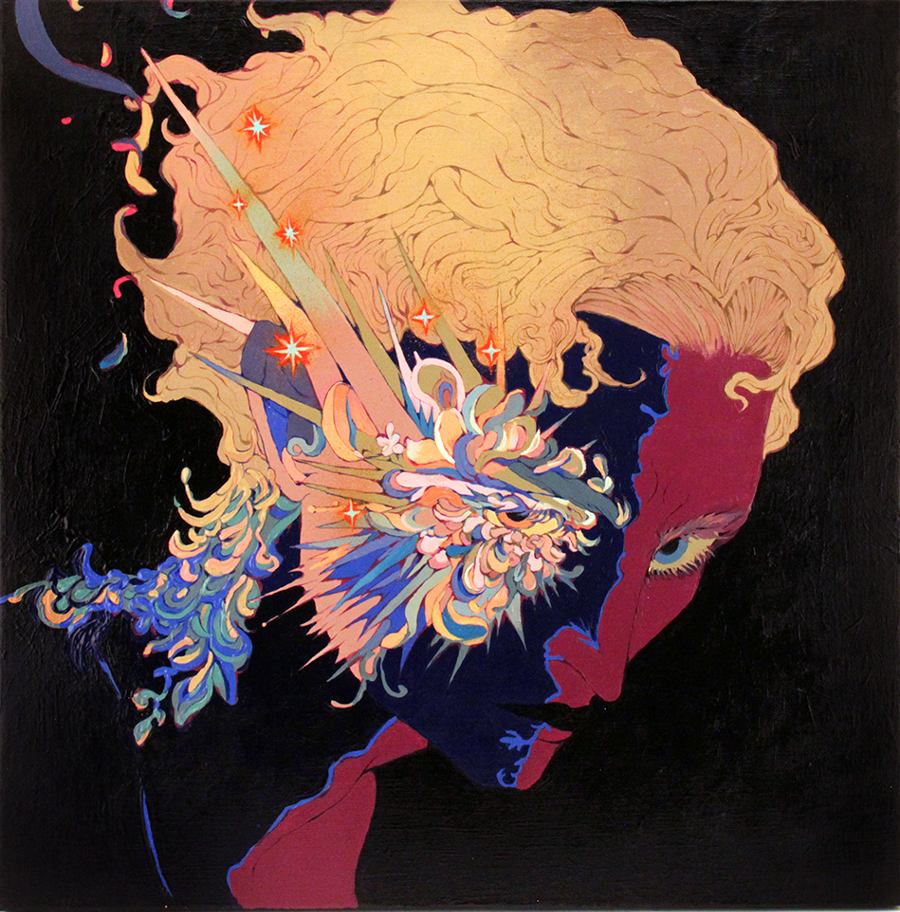
Acrylic and Gel Medium on Canvas
Is the sense of darkness in your work meant to temper the overt beauty of your narratives so they’re not too candy-sweet…sort of like a yin/yang narrative device?
When it comes to expressing yin and yang, that’s more an image of the natural world. Even within beautiful scenery, there are many different hidden creatures, and the food chain unfolds, and I am impressed by the cruelty and mystery and strength within that life. I also love watching nature documentaries, so I think I’m inspired by those, as well.
I want to create works that keep me aware of new discoveries, sensations and happiness, so I always keep painting.
Of all the feelings that your imagery inspires, is hope a central message in your art?
Yes, it is. I think perceptions will change depending on the viewer, but I’d love it if my art has a positive impact on the viewer’s feelings. Even if a work is darker, I always aim to create something in which light always exists somewhere. The painting itself is always a symbol of hope for me.
It seems like you’re trying to offer your audience a visual antidote to the bitter pill of reality, especially if they’re struggling through tough times. What are your thoughts on that?
Yeah, at first, I painted for myself, but I gradually started to think that it would be good if I could create paintings that would make others feel good looking at them. I have also been saved by many artists, and so I hope to do the same.
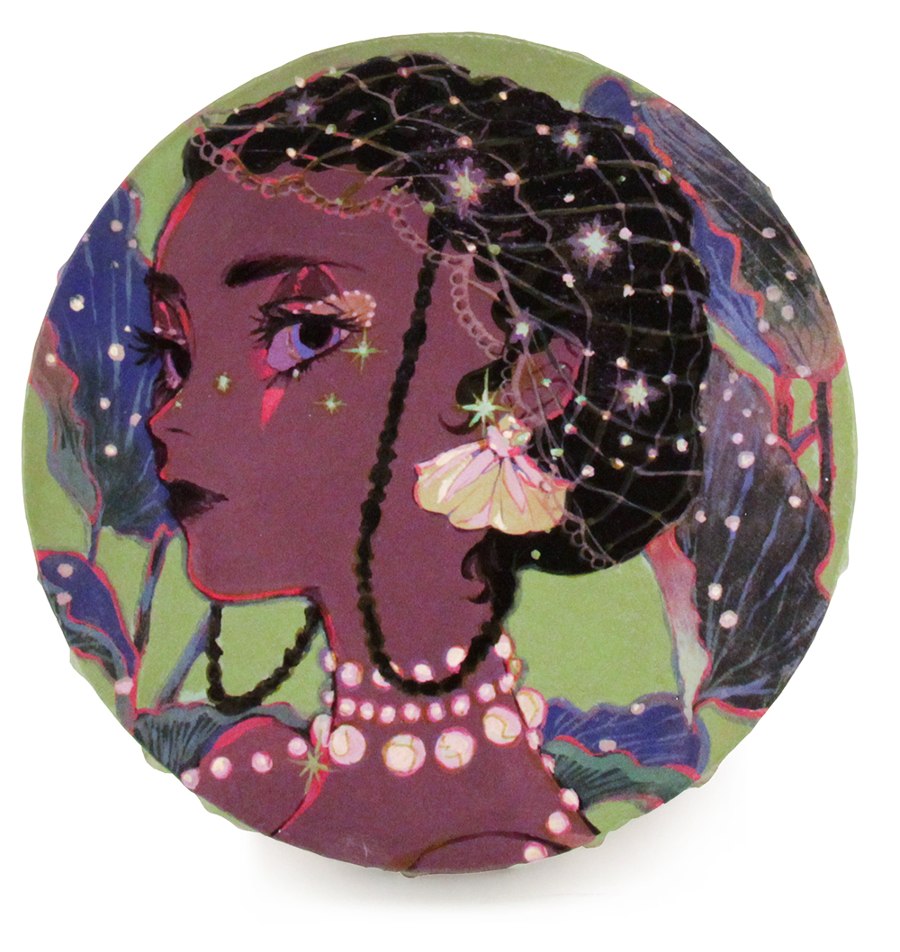
Acrylic and Gel Medium on Canvas

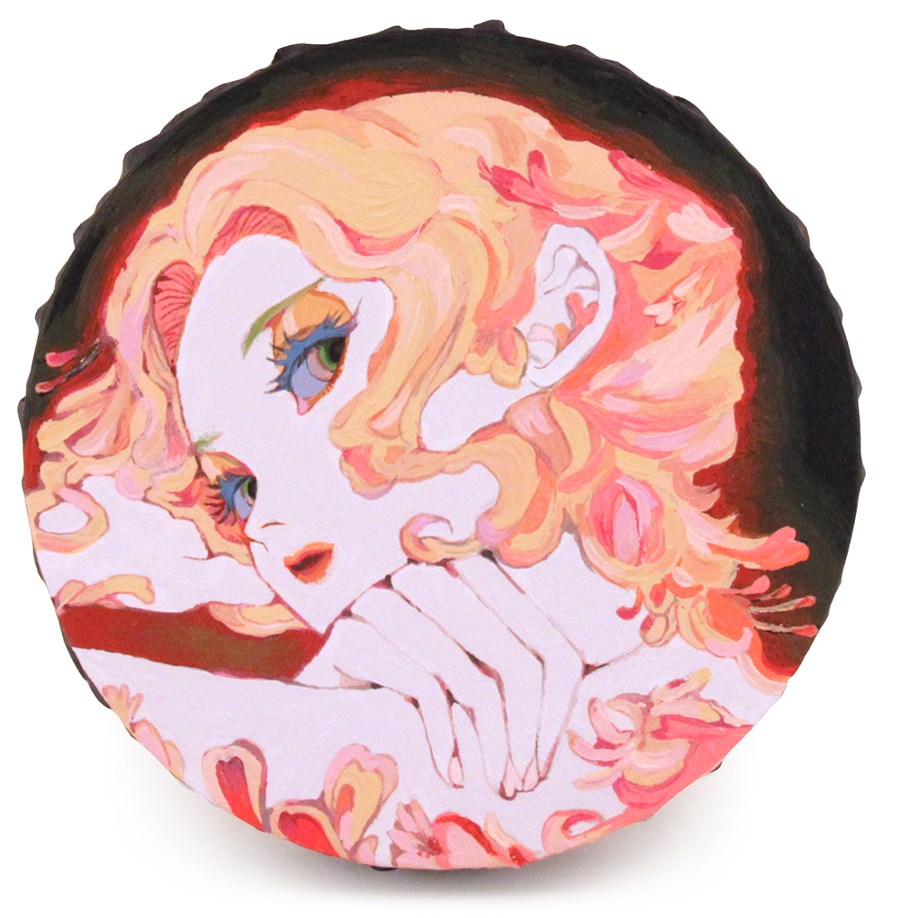
Acrylic and Gel Medium on Canvas
You never seem to duplicate the unique and interesting visual accents in your various paintings. What are your main aesthetic inspirations?
I’m really happy to create dynamic, lively designs, and I often take hints from traditional patterns, architectural designs, and everything that I find beautiful (such as people, plants, living things, scenery, etc.).
Some of your botanical framed pieces resemble lush tapestries or the type of designs that would be emblazoned upon high end fashion lines. Do any of those things impact your visual vocabulary?
Yeah, that’s true. I think I’m quite influenced by William Morris designs, rugs/textiles with traditional patterns, and fashion.
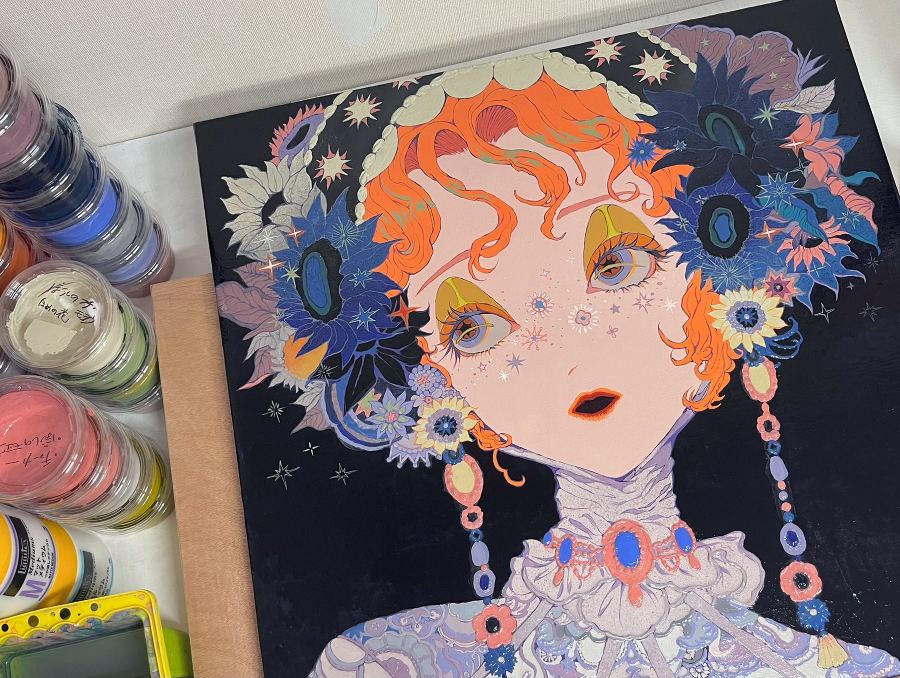
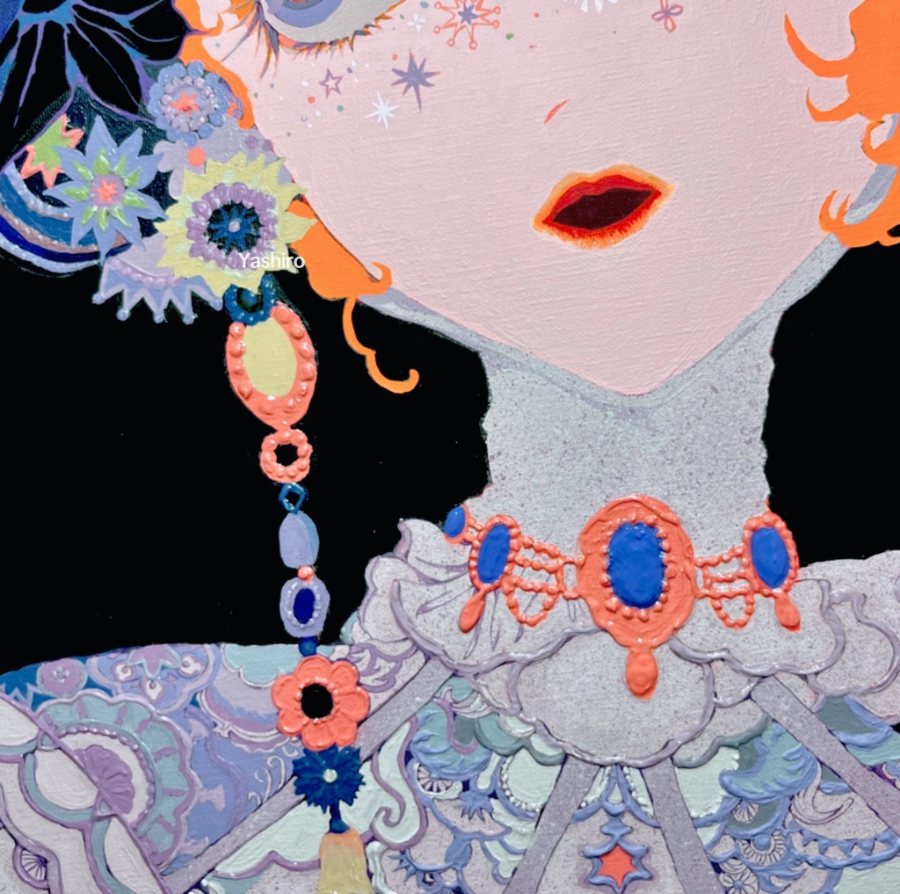
The YouTube video in which you flip through your art book, Wonderland, demonstrates just how alluringly imaginative and colour saturated all 168 pages are. What was the thematic inspiration for such a feast for the eyes and how does it feel to finally have a tangible artifact that contains your creative output?
Thank you! It makes me so happy to hear that! Wonderland depicts people who are obviously beautiful, but the main theme is fairytales. I’m very grateful that my own works will survive in this form.
Producing enough original art to fill the pages of a book seems like a huge endeavor. Are you a very prolific artist who manifests and executes your art concepts really quickly?
Some works take more than a month, while others take about a week or two. Most days I work on the same painting, but when I can’t concentrate, I just draw sketches. Most of my ideas come from sketches I’ve made before, and I just look for ways to put them together like a puzzle.
Whether in your daily art practice or while preparing for a huge solo show, what non-negotiable habit do you follow to ensure that your visual output is continually inspiring?
I want to create works that keep me aware of new discoveries, sensations and happiness, so I always keep painting. I never forget my original intention and gratitude, because when I am grateful for even the most trivial things, my emotions and sensibilities shimmer.
My goal is to create art that combines nostalgia and dreamscapes.

Acrylic and Gel Medium on Canvas
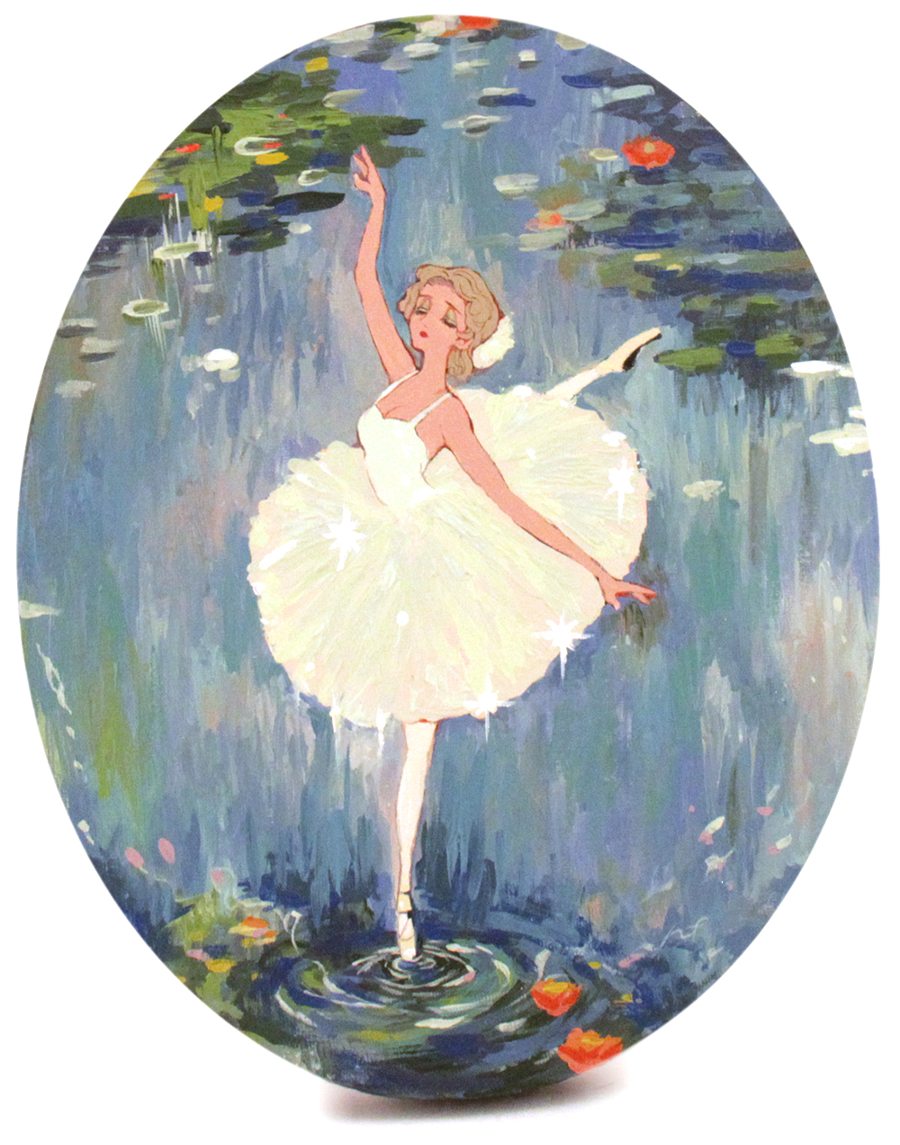
Acrylic and Gel Medium on Canvas
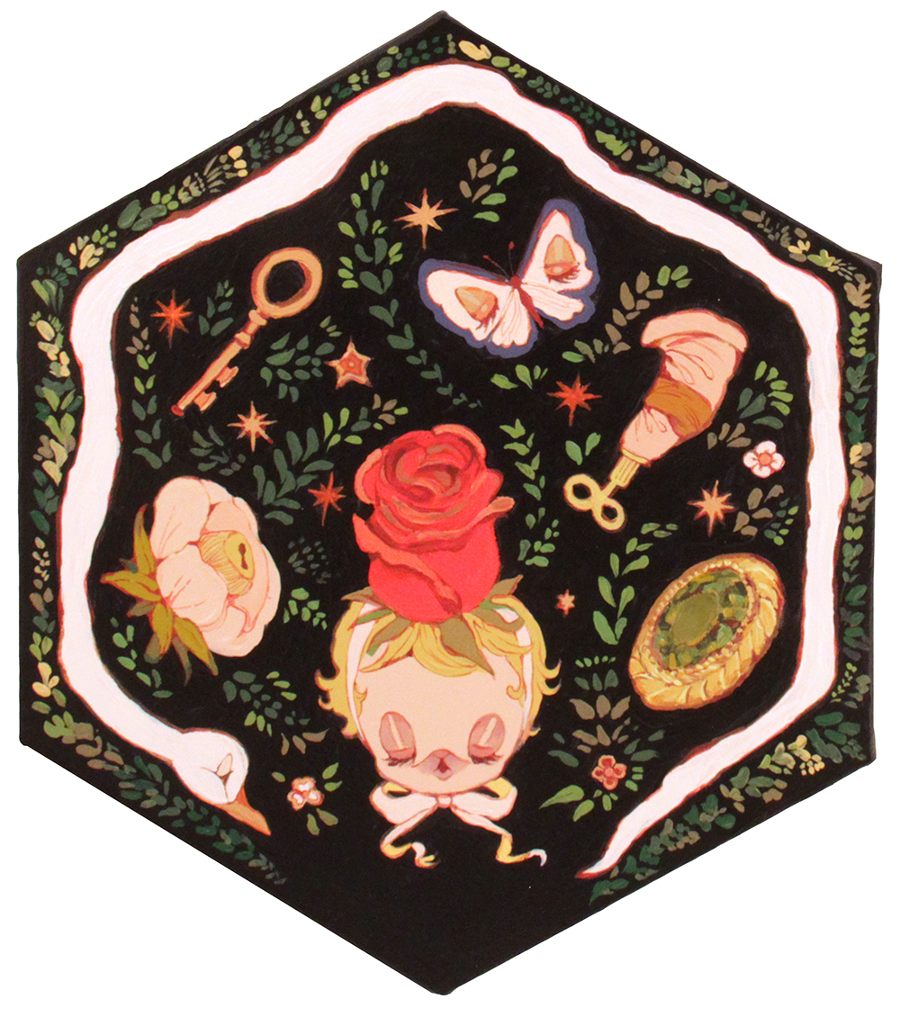
Acrylic and Gel Medium on Canvas
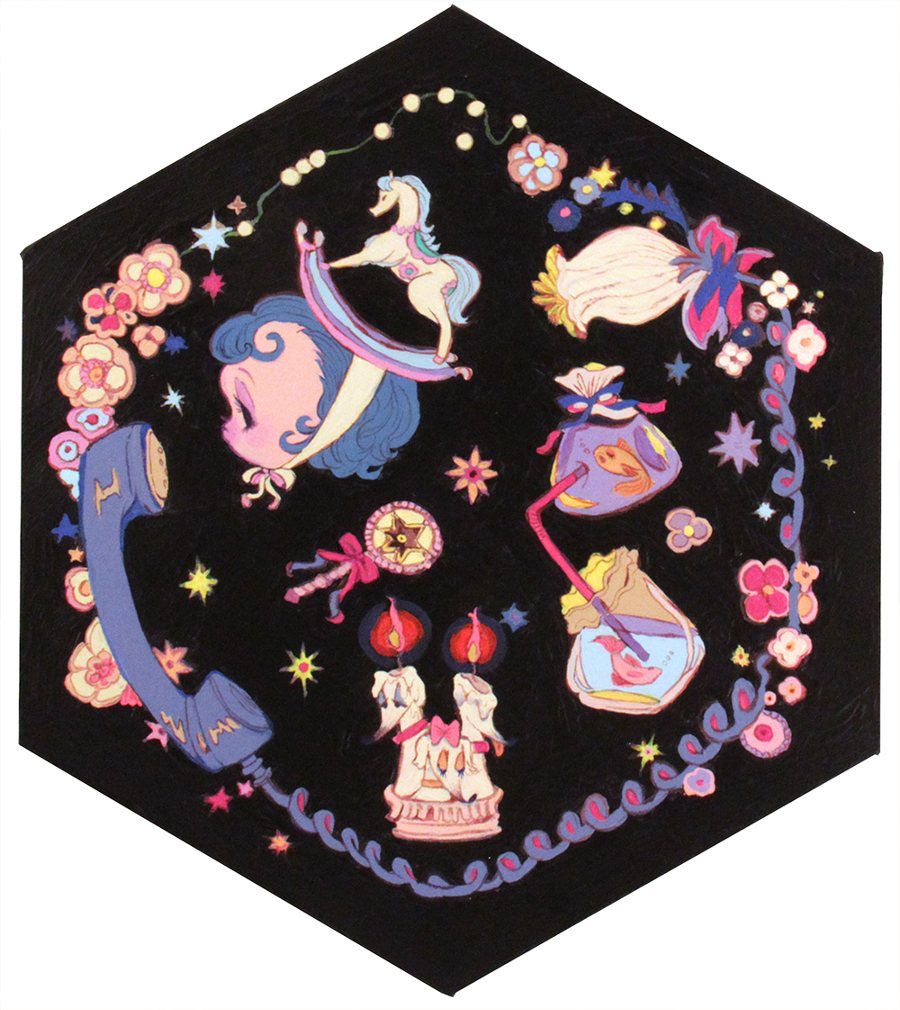
Acrylic and Gel Medium on Canvas
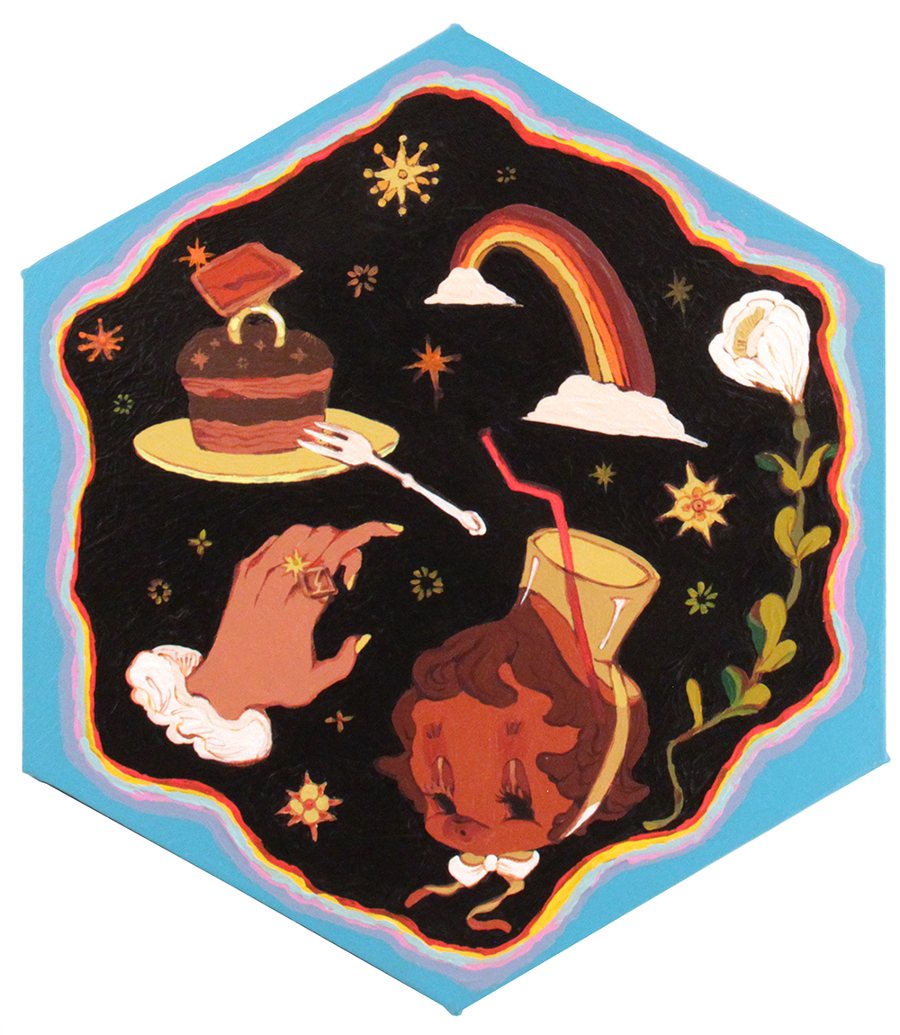
Acrylic and Gel Medium on Canvas

